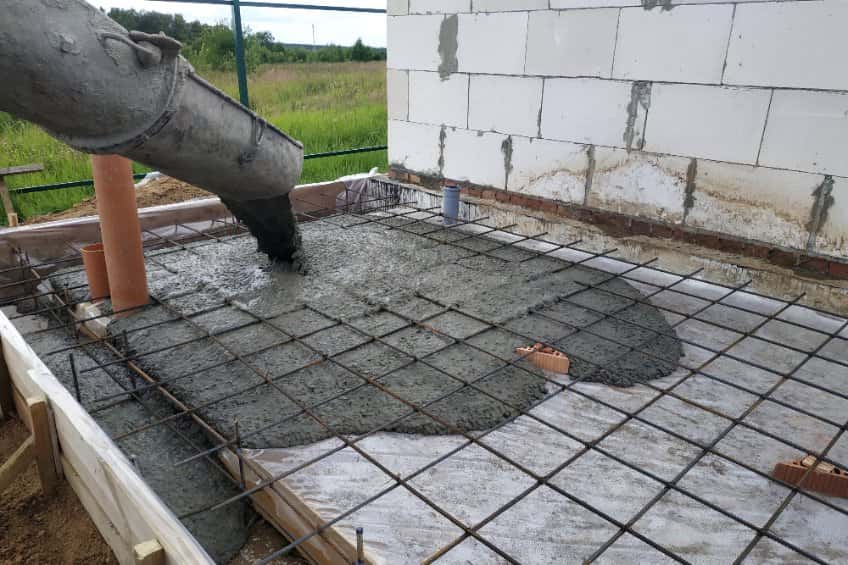It is a well-known fact that the foundation of a building greatly determines the strength of the building. One important thing we all put into great consideration when we are building or acquiring a property is the foundation. When you are building from scratch, your contractor and construction engineers will recommend the foundation’s quality to build; this greatly depends on the type and functionality of the building.
A bungalow’s foundation specifications would be very different from a skyscraper’s.
Therefore, when purchasing a building in Peoria, you must consult building experts to conduct a qualitative assessment. When your expert informs you about horizontal or diagonal cracks and other possible faults in the foundation of a building, you should know when to walk away from a foundation repair in Peoria.
What Is a Foundation?
The part of the building you cannot see that holds the building form into the ground is a foundation. It is one of the essential substructures on which a building stands. It helps to transfer the load from the building constructed on it to the soil. Typically, the foundation prevents lateral movement of the structure; prevents unequal settlement; distributes the structure’s weight over the surface of a large area of soil while increasing its structural stability.
Categories and Types of Foundations
Generally, foundations are divided into two categories; deep and shallow foundations. Your contractor and expert will consider many things before recommending the appropriate foundation that would meet your building criteria. Typically, they consider the soil profile and the size of the building load to be constructed; shortly, let us discuss what deep and shallow foundations are and where they are used.
What Are Deep Foundations?
As the name implies, deep foundations are found below the finished ground surface; they usually have a depth of 3m and more below the finished ground level. The strata at depth are highly dependent on the soil. There are different types of deep foundations, Pile foundation, which is made of concrete, steel or timber and is similar to a small-diameter column which is cast into the ground. Pile foundations are mostly used in bridge construction. Then Caisson’s foundation, also known as the drilled shaft, is similar to the pile foundation. However, it is regarded as a high capacity cast-in-situ foundation. Drilled shaft foundations have very high resistance and can transfer column loads larger than pile foundations.
What Are Shallow Foundations?
Also known as spread footings, the depth of the foundation is typically less than its width, and the depth is mostly 6ft from the lowest finished floor. There are about five shallow foundations: individual footing, strip footing, combined footing, raft or mat footings and strap or cantilever footing. Shallow foundations are used where the sufficient capacity of the soil is shallow and in a case where the foundation material would not result in undue settlement and are used for low-rise building construction.
Signs a Foundation Needs Repair
Recognizing a foundation fault can be very difficult. Most people would not know if a foundation needs repair. How do you know when to seek help for your foundation repair in Peoria? You must seek expert service for inspection for your foundation repair in Peoria. Do not try to figure things out yourself, although in some extreme cases, the fault to a foundation would be very feasible in horizontal or diagonal cracks from inside the building wall. Most times, the faulty foundation is more attributed to old buildings and structures; therefore, when acquiring an old building, do not forget to seek expert help in inspecting the foundation’s condition. This would help you determine whether to seek a foundation repair or whether you should walk away from a foundation repair in Peoria.
Generally, it would help if you looked out for your doors and windows jamming up because they might not be on the same level; this could indicate a sinking foundation, cracks on the floors and walls outside and inside the building, mold growth on the walls inside and out due to moisture and water damage. Generally, it would be best if you clarified your suspicion by inviting an expert for inspection.
When Should You Walk Away from a Foundation Repair?
Typically, any diagonal or horizontal crack above ¼ of an inch is a good reason to walk away. Mostly you should not consider repairing a faulty foundation except if you own the building already; when you want to purchase a building in Peoria, walk away from any property that has been certified by an expert to have a faulty foundation except if you are ready to spend extra money depending on the level of the fault, most times you will be required to bring down the whole building. Walking away from a faulty foundation is better than risking a possible collapse of your building.
Verdict
Recognizing a foundation is best done by an expert. If you live in a building and you suspect a faulty foundation, you should consult an expert foundation repair company in Peoria; they would tell you how much it would cost to repair the foundation. However, Home Advisor estimates that a foundation repair in Peoria at the low end could cost around $4,775. In contrast, the cost could be as high as $22,000, depending on the degree of foundation repair.











